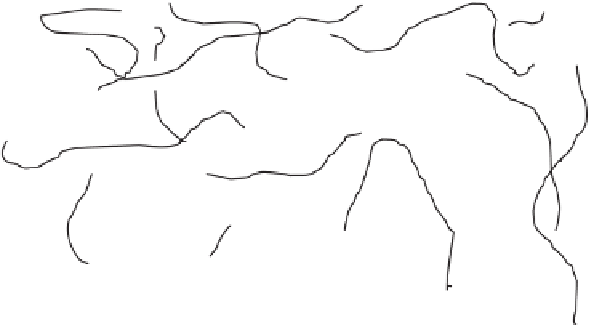Chemistry Reference
In-Depth Information
neglect. On the experimental side, the cross-linking techniques tradition-
ally used to prepare the multimodal network structures have been uncon-
trolled.
71,
124,
126
The resulting network chain-length distributions are
unimodal and probably very broad. On the theoretical side it turned out to
be convenient, if not necessary, to assume a distribution of chain lengths
that is not only unimodal but also
monodisperse.
71,
124
There are a number of reasons for developing techniques for controlling
network chain-length distributions; one is to check the “weakest-link”
theory
198
for elastomer rupture, which states that the shortest chains are
the “culprits” in causing rupture. Due to their limited extensibility, short
chains supposedly break at relatively small deformations and then act as
rupture nuclei.
The preparation of controlled-structure networks requires special
cross-linking reactions, such as end linking. In the case of a
bimodal
distri-
bution, the network consists of a combination of unusually short chains
(molecular weights of a few hundred) and the much longer chains typi-
cally associated with elastomeric behavior (molecular weights of 10,000
or 20,000) as in figure 7.14. Bimodal distributions clarify the dependence
of ultimate properties on non-Gaussian effects arising from limited chain
extensibility and elucidate synergistic effects that maximize the ultimate
properties.
Fi g u re 7.14:
A network having a bimodal distribution of network chain lengths. The short chains are
shown by heavier lines, and the dots represent the cross links, typically resulting from
the end linking of functionally terminated chains.




































